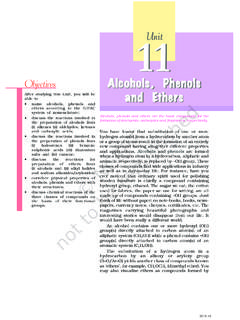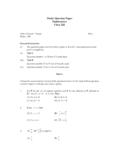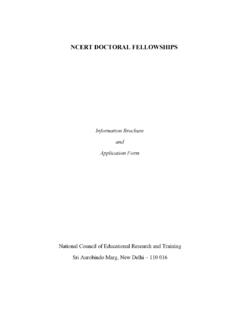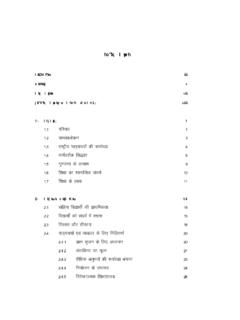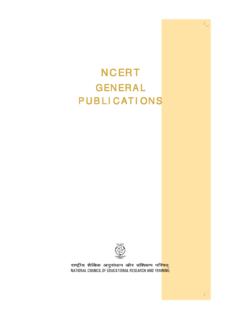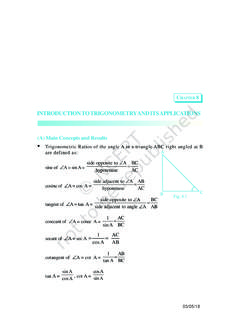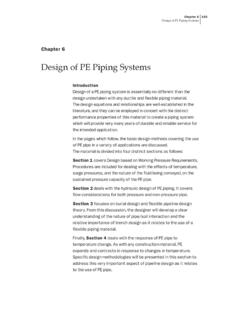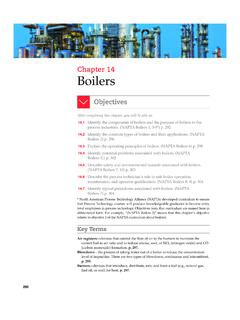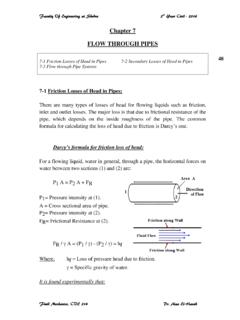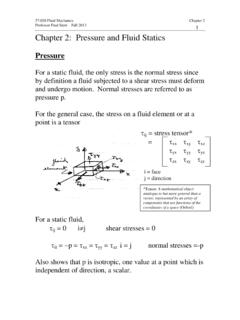Transcription of MECHANICAL PROPERTIES OF F
1 chapter TENMECHANICAL PROPERTIES OF INTRODUCTIONIn this chapter , we shall study some common physicalproperties of liquids and gases. Liquids and gases can flowand are therefore, called fluids. It is this property thatdistinguishes liquids and gases from solids in a basic are everywhere around us. Earth has an envelop ofair and two-thirds of its surface is covered with water. Wateris not only necessary for our existence; every mammalianbody constitute mostly of water. All the processes occurringin living beings including plants are mediated by fluids.
2 Thusunderstanding the behaviour and PROPERTIES of fluids are fluids different from solids? What is common inliquids and gases? Unlike a solid, a fluid has no definiteshape of its own. Solids and liquids have a fixed volume,whereas a gas fills the entire volume of its container. Wehave learnt in the previous chapter that the volume of solidscan be changed by stress. The volume of solid, liquid or gasdepends on the stress or pressure acting on it. When wetalk about fixed volume of solid or liquid, we mean its volumeunder atmospheric pressure.
3 The difference between gasesand solids or liquids is that for solids or liquids the changein volume due to change of external pressure is rather other words solids and liquids have much lowercompressibility as compared to stress can change the shape of a solid keeping itsvolume fixed. The key property of fluids is that they offervery little resistance to shear stress; their shape changes byapplication of very small shear stress. The shearing stressof fluids is about million times smaller than that of PRESSUREA sharp needle when pressed against our skin pierces it.
4 Ourskin, however, remains intact when a blunt object with awider contact area (say the back of a spoon) is pressed againstit with the same force. If an elephant were to step on a man schest, his ribs would crack. A circus performer across s tensionSummaryPoints to ponderExercisesAdditional exercisesAppendix2022-23chest a large, light but strong wooden plank isplaced first, is saved from this accident. Sucheveryday experiences convince us that both theforce and its coverage area are important. Smallerthe area on which the force acts, greater is theimpact.
5 This impact is known as an object is submerged in a fluid atrest, the fluid exerts a force on its surface. Thisforce is always normal to the object s is so because if there were a component offorce parallel to the surface, the object will alsoexert a force on the fluid parallel to it; as aconsequence of Newton s third law. This forcewill cause the fluid to flow parallel to the the fluid is at rest, this cannot , the force exerted by the fluid at rest hasto be perpendicular to the surface in contactwith it. This is shown in (a).
6 The normal force exerted by the fluid at a pointmay be measured. An idealised form of one suchpressure-measuring device is shown in (b). It consists of an evacuated chamber witha spring that is calibrated to measure the forceacting on the piston. This device is placed at apoint inside the fluid . The inward force exertedby the fluid on the piston is balanced by theoutward spring force and is thereby F is the magnitude of this normal force on thepiston of area A then the average pressure Pavis defined as the normal force acting per ( )In principle, the piston area can be madearbitrarily small.
7 The pressure is then definedin a limiting sense asP = lim A 0 FA( )Pressure is a scalar quantity. We remind thereader that it is the component of the forcenormal to the area under consideration and notthe (vector) force that appears in the numeratorin Eqs. ( ) and ( ). Its dimensions are[ML 1T 2]. The SI unit of pressure is N m 2. It hasbeen named as pascal (Pa) in honour of theFrench scientist Blaise Pascal (1623-1662) whocarried out pioneering studies on fluid common unit of pressure is the atmosphere(atm), the pressure exerted by theatmosphere at sea level (1 atm = 105 Pa).
8 Another quantity, that is indispensable indescribing fluids, is the density . For a fluid ofmass m occupying volume V, =mV( )The dimensions of density are [ML 3]. Its SIunit is kg m 3. It is a positive scalar quantity. Aliquid is largely incompressible and its densityis therefore, nearly constant at all , on the other hand exhibit a largevariation in densities with density of water at 4oC (277 K) 103 kg m 3. The relative density of asubstance is the ratio of its density to thedensity of water at 4oC.
9 It is a dimensionlesspositive scalar quantity. For example the relativedensity of aluminium is Its density 103 kg m 3. The densities of some commonfluids are displayed in Table of some common fluidsat STP*(a)(b)Fig. (a) The force exerted by the liquid in thebeaker on the submerged object or on thewalls is normal (perpendicular) to thesurface at all points.(b) An idealised device for measuringpressure.*STP means standard temperature (00C) and 1 atm PROPERTIES OF FLUIDS2512022-23252 PHYSICStExample The two thigh bones(femurs), each of cross-sectional area10 cm2support the upper part of a human body ofmass 40 kg.
10 Estimate the average pressuresustained by the Total cross-sectional area of thefemurs is A = 2 10 cm2 = 20 10 4 m2. Theforce acting on them is F = 40kg wt = 400 N(taking g = 10 m s 2). This force is actingvertically down and hence, normally on thefemurs. Thus, the average pressure is25m N 10 2 ==AFPav Pascal s LawThe French scientist Blaise Pascal observed thatthe pressure in a fluid at rest is the same at allpoints if they are at the same height. This factmay be demonstrated in a simple shows an element in the interior ofa fluid at rest.
